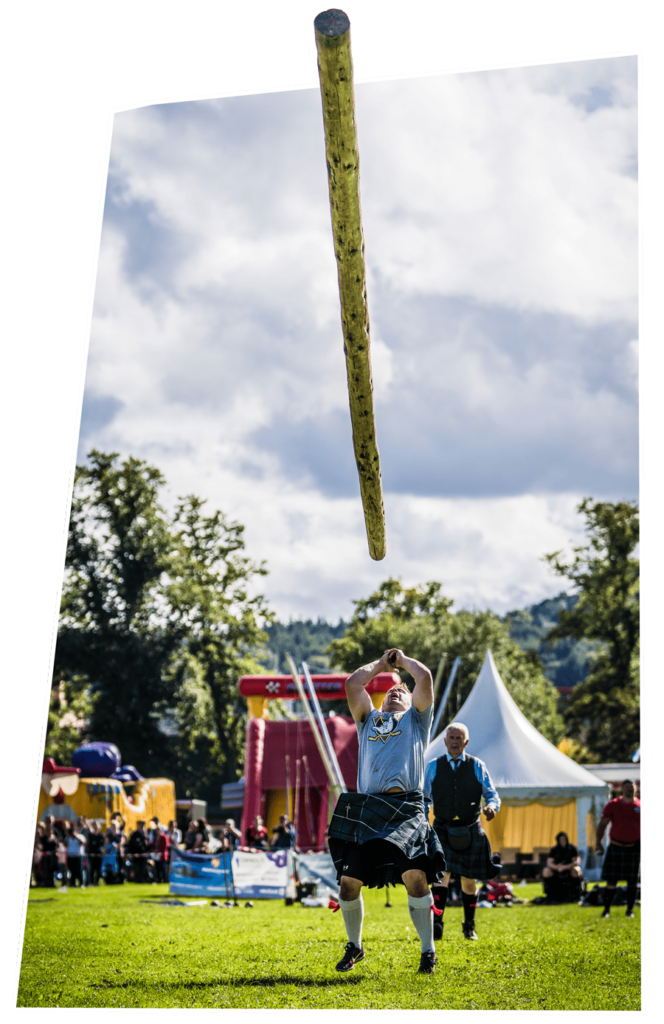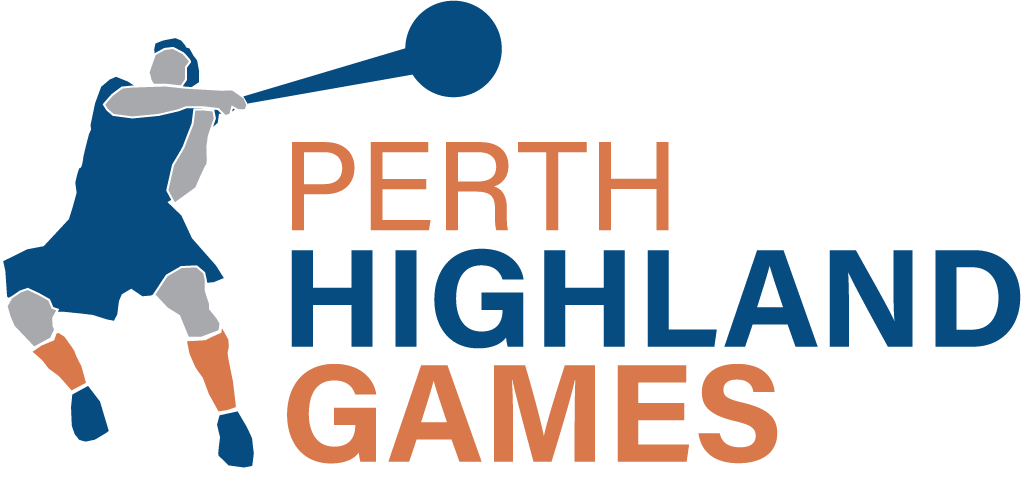HEAVYWEIGHTS
a main attraction...
One of the main attractions at highland games are the heavyweight athletes taking part in the many different disciplines over the course of the day.
Ever since the days when the various clans had battles between each other to prove their strength, prowess, agility and fleetness of speed, there has been a keen interest to prove this fete of strength by men against each other.
With the variety of events in which the heavyweight athletes participate they must develop the necessary power and strength of all muscle groups throughout the body from the feet through their legs and body and eventually to arms and fingers. To achieve this level of fitness they must train hard.
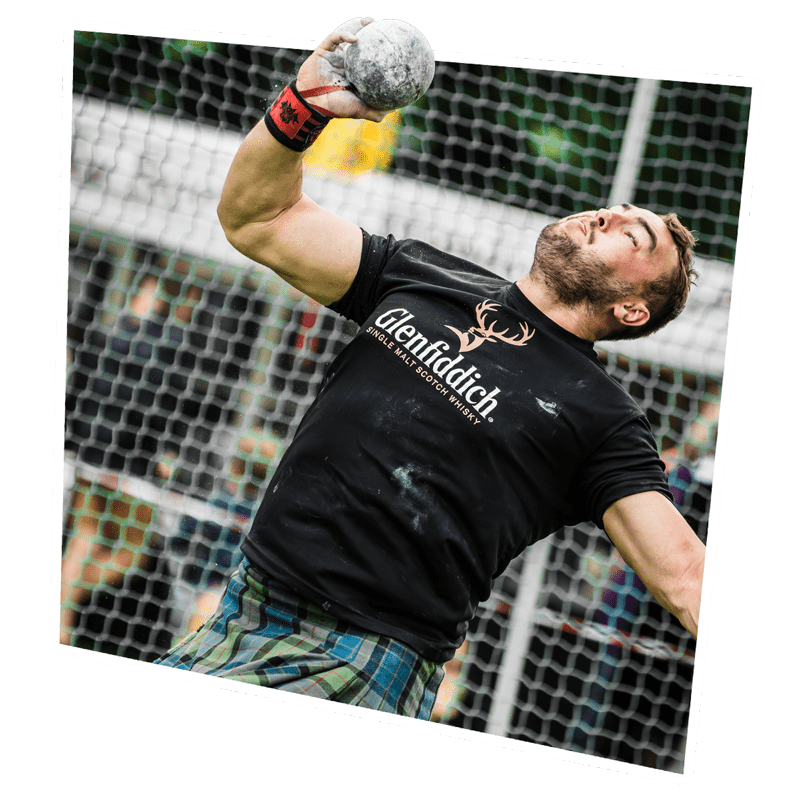
General rules
- Each competitor has three attempts in each event with the best of three to count.
- In the interests of safety, the Judge has the right to disqualify any competitor who does not come up to the standard in any of the heavy events.
- All competitors must appear and compete in highland dress. In sponsored events, no competitor shall be allowed to wear any prominent form of advertising except where the advertisement relates to the firm or company supporting the event
- In all events, after normal competition is complete, the winner will be given the opportunity to attempt both ground and National records. They will be given one attempt for the ground record if not broken within the normal competition, and if successful, one further attempt for the National record.
- In the shott putt, hammer and weight for distance, the weight will be thrown from behind a wooden trig 6ins high and 4 feet 6ins long. All competitors must have one foot behind the line of the trig prior to each throw, but both feet must be behind the trig on completion of the throw. The touching of any part of the trig, or the line of the trig extended by any part of the competitors body shall be a foul throw – whether the weight has been thrown or not.
- Measurements will be taken from the centre of the trig to the nearest break of ground.
PUTTING THE STONE OR BALL
Probably one of the oldest of the heavyweight events which take place at the Highland Games is putting the stone or ball.
The stone which can vary in shape and weight originally came from the bed of a river where the action of the water has worn the stone to the required smoothness.
At most Games, the stone has now been replaced with an iron ball that weighs either 16lbs or 22lbs. The stone or ball is putt with one hand in front of the shoulder and is normally delivered while the athlete performs behind a wooden trig which is 4ft 6ins long and 6ins high.
From the time the athlete takes up his position at the stance and poises with the stone or ball, makes his putt while the whole body balanced on one leg, and the completion of the delivery a few seconds pass.

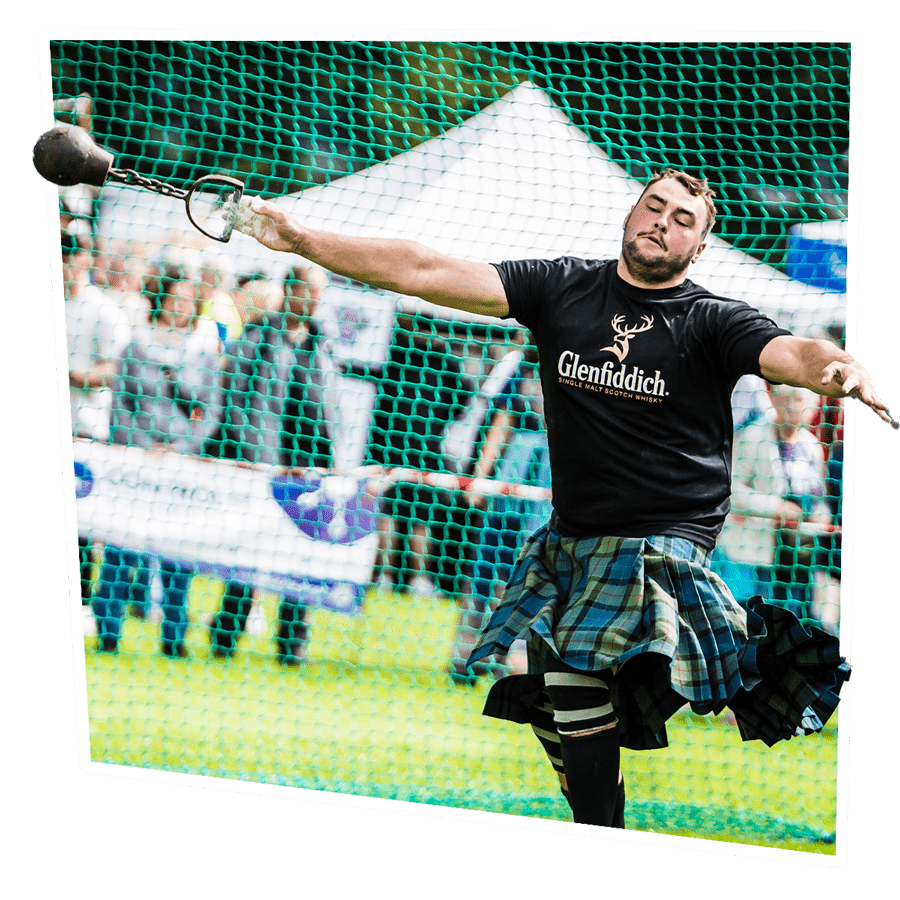
THROWING THE WEIGHT FOR DISTANCE
The weight is a ball and chain with a handle on the end where the overall length of the chain ball and handle must not exceed 18 inches.
There are two standard weights – 28lbs and 56lbs. Before throwing the weight from behind the wooden trig position, while facing forward the athlete swings the weight round behind him and then turns a few times within a distance of 9 feet behind the trig before releasing the weight as far as he can without touching the top of the wooden trig.
Both feet must be behind the trig on completion of the throw.
In the old days, it was normal to throw the 56lbs where the common box weight was used, but this was replaced by the 28lb weight at most of the Highland Games although both can be seen at some venues.
THROWING THE WEIGHT OVER THE BAR
The standard commercial box weight of 56lbs with a ring attached is used for throwing the weight for height.
It is intriguing to watch the athlete as he stands under the bar which is suspended some height above him, swings the weight between his legs with one hand and then with his energy releases the weight and watches it go up and over the bar and then come down only inches from him.
The athletes repeat this performance until the bar has been raised to a height when only one of two athletes are left in the competition as outright winners or sharing the same height.
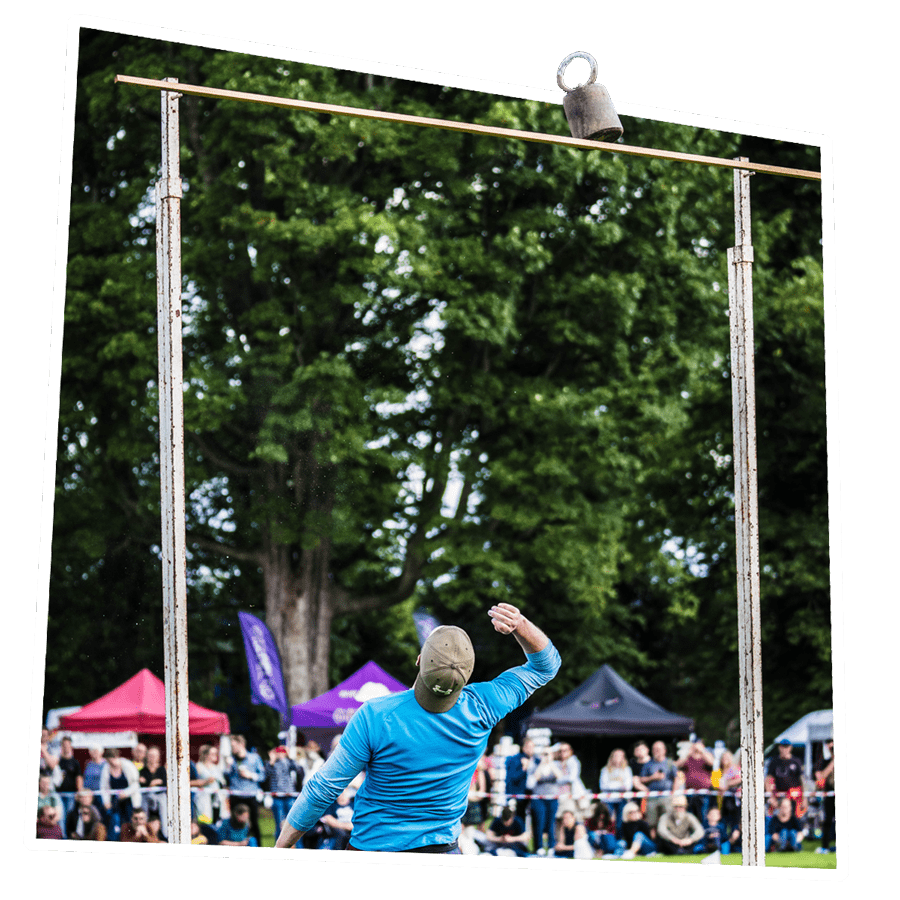
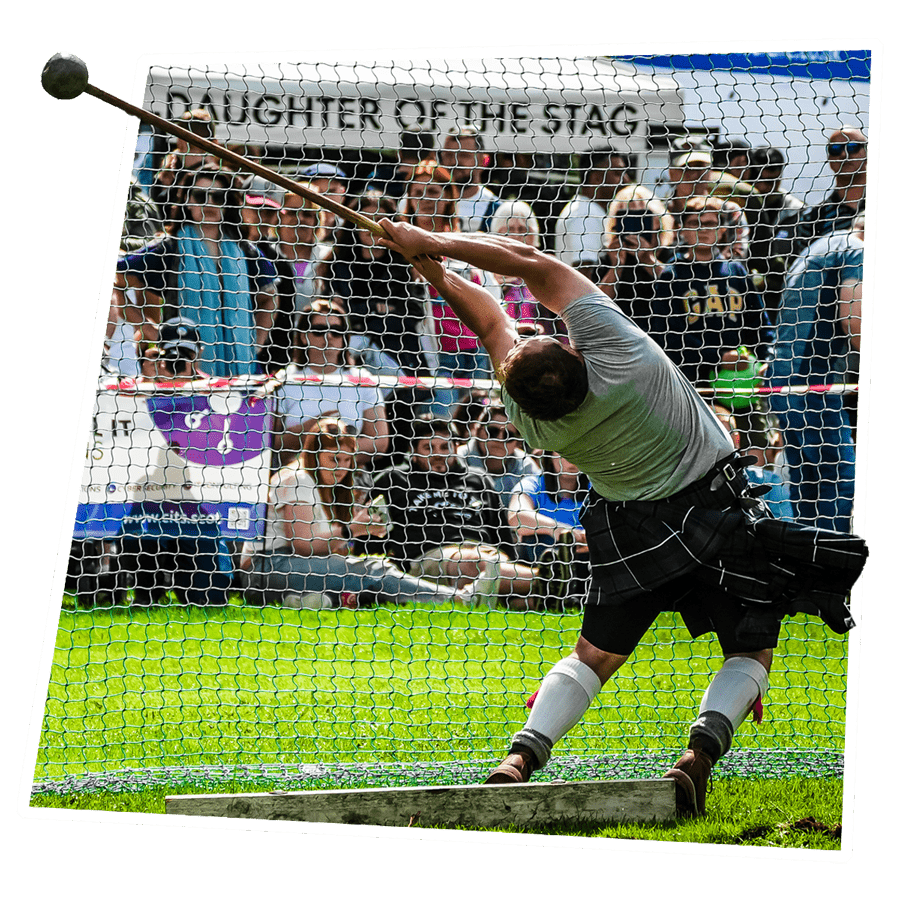
THROWING THE HAMMER
The standard commercial box weight of 56lbs with a ring attached is used for throwing the weight for height.
It is intriguing to watch the athlete as he stands under the bar which is suspended some height above him, swings the weight between his legs with one hand and then with his energy releases the weight and watches it go up and over the bar and then come down only inches from him.
The athletes repeat this performance until the bar has been raised to a height when only one of two athletes are left in the competition as outright winners or sharing the same height.
TOSSING THE CABER
The origins of caber tossing are not clear but some say that it was developed from throwing tree trunks well into the middle of a river so they would float down to the sawmills without snagging on the river banks.
However, it is more likely it started as a challenge of strength among the foresters who tried to see how far they could throw a tree. A caber used for open competition is normally about 18 feet long and about 150lbs in weight. The famous Braemar caber which measures 16ft and weighs 132lbs is indeed a challenge.
The art of throwing for distance is now replaced by the accuracy judged in relation to an imaginary face of a clock on the ground and the perfect toss is the one that lands nearest 12 o`clock. The caber is raised in a perpendicular position in front of the competing athlete by helpers, who then places his clasped hands under the narrow end by resting the caber against his shoulders as he rises. With the heavy end of the caber towering away above him, he then must have complete control and balance before starting his run.
At top speed he takes his run and coming to a stop he quickly hurls the caber with the heavy end hitting the ground first and, hopefully, the light end will carry over to fall into a 12 o`clock position. The accuracy is decided by the judge who runs after him and makes his decision as to how near to a perfect throw has been achieved. Where the caber fails to turn over, then the angle to which it reached will be noted for placing of the athlete in that event. It is normal practice to have more than one caber available at each Highland games to allow for the different standard of athlete taking part on that day and also in the event that one may be broken.
